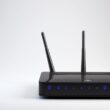You will learn how to write to NTFS on a Mac in this article and how to enable Mac NTFS writing in the process. There are unique advantages and disadvantages to each strategy explained. After reading this article, you may pick the approach that best meets your needs for writing to NTFS drives on your Mac. When switching between Windows and macOS, cross-platform incompatibility has proven to be a significant hindrance. And this is especially true when attempting to transfer data between Windows and macOS using an NTFS drive on either platform.
You discovered that you could read NTFS files on the Mac after connecting an NTFS drive to the computer. However, you could not perform any file manipulation operations on it, including renaming, copying, pasting, deleting, moving, or even creating new files. Is it possible to use NTFS on a Mac? Is it possible to read and write to the NTFS file system on a Mac? Follow the instructions in this article to learn about the many techniques you may use to fully access NTFS drives on your Mac if you do not want to format your NTFS disk on your Mac.
So, what exactly is NTFS, and how does it function?
The New Technology File System, or NTFS, is a file system that makes use of Windows NT to store and retrieve files on hard drives and on the Internet. First, it was made available in 1993, and it can be found in the most recent versions of the Windows OS.
With ACLs, multi-user access control, and compatibility with a wide range of operating systems, NTFS is a strong, high-performance logging file system with logging capabilities. Multi-streaming, data recovery, fault tolerance, security, file systems, and UNICODE names are some of its features.
The NTFS file system is the Windows Server operating system’s primary file system. Windows 7, 8, XP, Vista, 10, NT, and 2000 all have it. Other operating systems, such as BSD and Linus, are also compatible with it. The Mac OS only allows you to read NTFS files.
Step-by-step instructions on how to write to NTFS on a Mac
Method 1: Making use of BootCamp
To run Microsoft Windows on your Mac, you may use Bootcamp, which comes pre-installed with Mac OS X. Windows 10 is compatible with the most current version of macOS (Mojave). The setup procedure requires customers to shrink the size of their current macOS installation to make room for the Windows operating system.
On your Mac, this enables you to boot into two operating systems simultaneously. Upon completing the installation process, Windows 10 on your Mac will behave just like a regular PC. In this case, you can work with NTFS-formatted drives as well.
A valid Windows 10 DVD, a USB stick with at least 8 GB of space, and an internet connection are all you need to start.
Easy to set up and use: BootCamp is easy to set up and use, but you must buy a Windows 10 license if you want to keep the OS running after 90 days. You’ll also have to deal with files using Microsoft applications rather than ones made for Macs, such as iMovie, which is a logical consequence of this.
To use the online versions of the iWorks apps (Pages and Keynotes), you can go to iCloud through your web browser and work with them on a PC.
It would be best to keep in mind that any files you save to the Windows 10 section of your hard drive itself will not be accessible when you reboot into macOS and vice versa when you use BootCamp.
Method 2: Using NTFS drives from third-party sources
When reading and writing on NTFS volumes from your Mac, NTFS for Mac by Paragon Software is a simple and reliable option. It is easy to use and doesn’t require much forethought. Using a three-step procedure, you can read and write data from an NTFS-formatted hard disk, solid-state device, or flash drive. Follow the steps given below:
- On your Mac, download and install NTFS for Mac by Paragon Software.
- Now you must open “System Preferences.” And then you have to choose “Full Disk Access” from the menu.
- Launch NTFS for Mac and click on the NTFS icon. The NTFS-formatted disks connected to your Mac may be accessed using the Finder.
Once installed, you may access all of your Microsoft NTFS disks by selecting them from the Mac menu bar and performing standard actions such as mounting, unmounting, and confirming them by clicking on the NTFS for Mac menu bar. Microsoft NTFS for Mac by Paragon Software provides a superb user experience and advanced methods that make it simple to read and write data on NTFS storage devices.
Method 3: Convert an NTFS drive to an exFAT drive (erase all files)
Both Mac OS X and Windows can read and write to exFAT-formatted hard drives. All that is required is to convert the disk’s formatting from NTFS to exFAT to access the contents on the drive. This approach is the quickest and most straightforward of all the ways available for accessing NTFS files on a Mac. To format an NTFS disk on a Mac, launch Disk Utility and choose the appropriate option. Select the drive that must be formatted, and then select the “Erase” option in the top navigation bar. When asked what format to use, choose “exFAT” from the Format drop-down box and then click “Erase.”
These workarounds will let you write to NTFS disks on MacOS Monterey without experiencing any performance degradation. If you want the quickest and most straightforward solution, just convert your data from NTFS to exFAT. Your files will then be ready for usage. Alternatively, you may use third-party NTFS solutions such as Microsoft NTFS for Mac by Paragon Software to read and write data from NTFS-formatted disks with relative ease.
Method 4: Enable NTFS Write on the Macintosh computer
It’s worth noting that macOS does have the ability to write to the NTFS file system, but Apple has disabled this functionality by default. You’ll need to utilize Terminal to activate the tool. and you’ll be doing so at your own risk. Because the functionality is considered experimental by Apple (or, at the very least, is not endorsed by the company), the outcomes may be unexpected.
You should always back up vital information before making considerable modifications to your system whenever you make any significant changes. Allowing a setting that impacts disk write capabilities in this situation has the potential to damage hard drives and cause data loss on the system. Because of this, proceed with care.
To activate the NTFS write mode on a Mac, you must first understand the risks associated with doing so. The following steps given will guide you through the whole process:
- With the NTFS drive connected to your Mac, open Terminal.
- Then enter the following command and hit the Return key:
sudo nano /etc/fstab
- When prompted, enter your administrative password and hit Return.
- Replace “name” with the title of your external volume in the following command:
LABEL=NAME none ntfs rw, auto, nobrowse
- To save your work, use Control + O followed by Return.
- To exit Nano, use Control + X on your keyboard.
- Eject and reconnect your NTFS drive.
- It is necessary to use 040 to indicate any spaces in your drive name. For example, if your drive is named NTFS DRIVE, you will need to provide the following information:
LABEL=NTFS040DRIVE none ntfs rw, auto, nobrowse
Your external drive will be ready for use in multiple volumes when you have finished the procedure. To get access to your write-ready NTFS disk on your Mac, follow these steps:
- Open the Finder program.
- Select “Go to Folder” from the Go menu by clicking the Go button.
- Type/Volumes into the text box and hit Return.
You should be able to access your NTFS drive at this point and should have full read and write access. If you’ve tried the terminal technique and it didn’t work, make sure you typed in all the instructions correctly. Just one character that doesn’t fit in is enough to throw the whole thing off track.
Wrapping up
Even while NTFS files are still a rather specialized file format, it might be frustrating not to have complete control over them. You may find yourself in worse trouble if you attempt to make modifications and accidentally damage your Mac’s files. Use the strategies we’ve discussed today to your advantage. Remember that having a backup of your files and data is highly advisable before attempting any significant modifications on any tech device.



